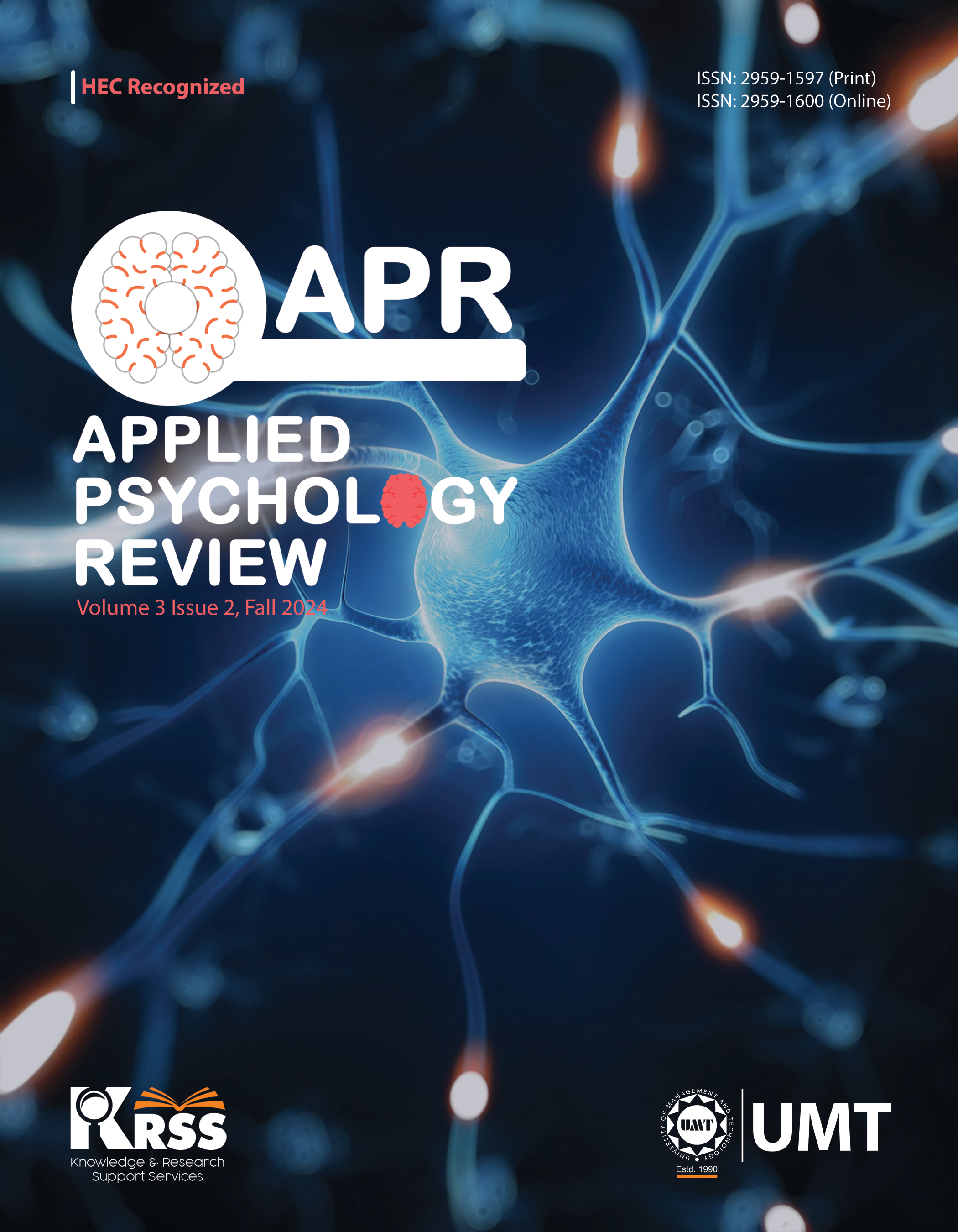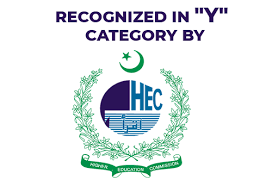Effect of Acne Vulgaris on the Body Image of Adolescents and Young Adults
Abstract
 Abstract Views: 0
Abstract Views: 0
Acne vulgaris is a prevalent skin condition that often impacts individuals' psychological and emotional well-being. This study aimed to investigate the influence of acne severity on the body image of adolescents and young adults. Adolescents and young adult patients who were actively seeking treatment for their acne participated in the study. Through convenience sampling, data was collected in-person from 122 acne patients in Islamabad, encompassing both male and female participants aged between 15-32 years. Utilizing the Body Image Scale and Global Acne Grading System Scale, the findings revealed a significant positive association between the severity of acne vulgaris and body image issues. Participants with severe acne vulgaris reported more issues with body image, thereby suggesting the pervasive impact of acne vulgaris on body image. Women reported significantly higher levels of body image concerns as compared to men. However, there was no significant gender difference in terms of acne severity. These findings underscored the intricate connection between dermatological conditions and psychological health. Moreover, the findings also emphasized the need for holistic approaches of interventions that address both physical and emotional dimensions.
Downloads
References
Babar, O., & Mobeen, A. (2019). Prevalence and psychological impact of acne vulgaris in female undergraduate medical students of Rawalpindi and Islamabad, Pakistan. Cureus, 11(9), Article e5722. https://doi.org/10.7759/cureus.5722
Baldwin, H. E. (2002). The interaction between acne vulgaris and the psyche. Cutis-New York, 70(2), 133–139.
Brennan, M. A., Lalonde, C. E., & Bain, J. L. (2010). Body image perceptions: Do gender differences exist. Psi Chi Journal of Undergraduate Research, 15(3), 130–138. https://doi.org/10.24839/1089-4136.JN15.3.130
Davis, C., & Cowles, M. (1991). Body image and exercise: A study of relationships and comparisons between physically active men and women. Sex Roles, 25, 33–44. https://doi.org/10.1007/BF00289315
Dawson, A. L., & Dellavalle, R. P. (2013). Acne vulgaris. BMJ, 346, 3—33. https://doi.org/10.1136/bmj.f2634
De Sousa, A. (2010). Psychological issues in acquired facial trauma. Indian Journal of Plastic Surgery, 43(2), 200–205. https://doi.org/10.1055/s-0039-1699436
Doshi, A., Zaheer, A., & Stiller, M. J. (1997). A comparison of current acne grading systems and proposal of a novel system. International Journal of Dermatology, 36(6), 416–418. https://doi.org/10.1046/j.1365-4362.1997.00099.x
Fried, R. G., & Wechsler, A. (2006). Psychological problems in the acne patient. Dermatologic Therapy, 19(4), 237–240. https://doi.org/10.1111/j.1529-8019.2006.00079.x
Gallagher, A., Rippon, S., Carthy, J., & Rioga, M. (2015). The effects of contemporary media upon adolescents' body image disturbance. British Journal of Mental Health Nursing, 4(5), 214–218. https://doi.org/10.12968/bjmh.2015.4.5.214
Hopwood, P., Fletcher, I., Lee, A., & Ghazal, S. A. (2001). A body image scale for use with cancer patients. European Journal of Cancer, 37(2), 189–197. https://doi.org/10.1016/S0959-8049(00)00353-1
Kaymak, Y., Ulutaş, İ., Taner, E., Bakir, B., & Şimşek, I. (2007). Body image satisfaction and anxiety of a Turkish sample of university students with skin diseases. Psychological Reports, 100(2), 499–508. https://doi.org/10.2466/pr0.100.2.499-508
Khan, N. T., Jameel, J., Khan, M. J., Rehman, S. U. A., & Jameel, N. (2017). Body image and weight concern among Pakistani adolescent females. Mathews Journal of Dermatology, 2(1), 1–4.
Koo, J. (1995). The psychosocial impact of acne: Patients' perceptions. Journal of the American Academy of Dermatology, 32(5), S26–S30. https://doi.org/10.1016/0190-9622(95)90417-4
Lynn, D. D., Umari, T., Dunnick, C. A., & Dellavalle, R. P. (2016). The epidemiology of acne vulgaris in late adolescence. Adolescent Health, Medicine and Therapeutics, 7, 13–25. https://doi.org/10.2147/AHMT.S55832
Neagu, A. (2015). Body image: A theoretical framework. Proceedings of the Romanian Academy, 17, 29–38.
Rehman, M. (2023). Auteur cinema of Pakistan: Filmmakers’ perspective on sociocultural complexities of Pakistan. Journal of Media & Communication Studies, 3(2), 85–100. https://doi.org/10.5281/zenodo.8239550
Sereflican, B., Tuman, T. C., Tuman, B. A., & Parlak, A. H. (2019). Type D personality, anxiety sensitivity, social anxiety, and disability in patients with acne: A cross-sectional controlled study. Advances in Dermatology and Allergology/Postępy Dermatologii i Alergologii, 36(1), 51–57. https://doi.org/10.5114/ada.2019.82824
Singam, V., Rastogi, S., Patel, K. R., Lee, H. H., & Silverberg, J. I. (2019). The mental health burden in acne vulgaris and rosacea: An analysis of the US National Inpatient Sample. Clinical and Experimental Dermatology, 44(7), 766–772. https://doi.org/10.1111/ced.13919
Slade, P. D. (1994). What is body image? Behaviour Research and Therapy, 32(5), 497–502. https://doi.org/10.1016/0005-7967(94)90136-8
Stamu‐O'Brien, C., Jafferany, M., Carniciu, S., & Abdelmaksoud, A. (2021). Psychodermatology of acne: Psychological aspects and effects of acne vulgaris. Journal of Cosmetic Dermatology, 20(4), 1080–1083. https://doi.org/10.1111/jocd.13765
Tan, J. K. (2004). Psychosocial impact of acne vulgaris: Evaluating the evidence. Skin Therapy Lett, 9(7), 1–3.
Thomas, D. R. (2004). Psychosocial effects of acne. Journal of Cutaneous Medicine and Surgery, 8, 3–5. https://doi.org/10.1007/s10227-004-0752-x
Tiggemann, M. (1994). Gender differences in the interrelationships between weight dissatisfaction, restraint, and self-esteem. Sex Roles, 30(5–6), 319–330. https://doi.org/10.1007/BF01420596
Tiggemann, M., & Slater, A. (2014). NetTweens: The internet and body image concerns in preteenage girls. The Journal of Early Adolescence, 34(5), 606–620. https://doi.org/10.1177/0272431613501083
Ullah, H., & Khan, H, N. (2014). The objectification of women in television advertisements in Pakistan. FWU Journal of Social Sciences, 8(2), 26–35.
Voelker, D. K., Reel, J. J., & Greenleaf, C. (2015). Weight status and body image perceptions in adolescents: Current perspectives. Adolescent Health, Medicine and Therapeutics, 6, 149–158. https://doi.org/10.2147/AHMT.S68344
Wolkenstein, P., Machovcová, A., Szepietowski, J. C., Tennstedt, D., Veraldi, S., & Delarue, A. (2018). Acne prevalence and associations with lifestyle: A cross‐sectional online survey of adolescents/young adults in 7 European countries. Journal of the European Academy of Dermatology and Venereology, 32(2), 298–306. https://doi.org/10.1111/jdv.14475
Yasmin, M., Sohail, A., & Mangrio, R. (2015). Myths broken or sustained: Representation of women victims in Pakistani media. Open Journal of Social Sciences, 3(7), 209–219. https://dx.doi.org/10.4236/jss.2015.37033
Yoqub, F., Bajwa, R. S., & Batool, I. (2020). Impact of acne vulgaris on self-esteem, body image perception and quality of life among adolescents. Journal of Pakistan Association of Dermatologists, 30(1), 26–31.
Copyright (c) 2024 Mohib Rehman, Amna Nasim, Marhama Shams, Malaika Waseem

This work is licensed under a Creative Commons Attribution 4.0 International License.




